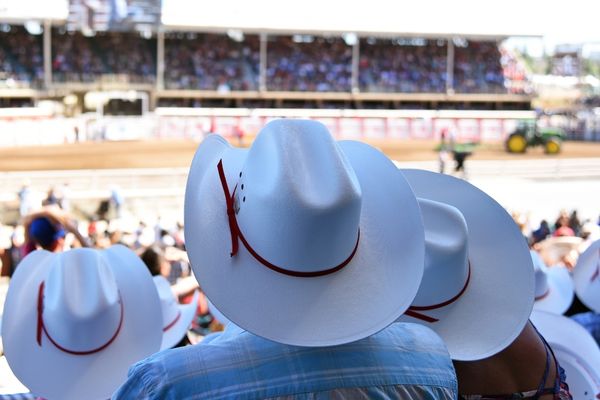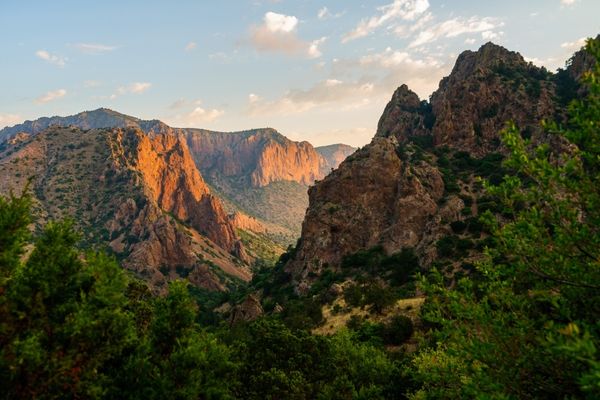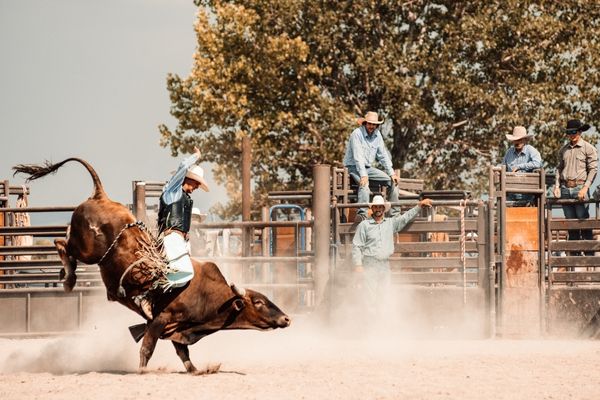Immigrate to Texas
Everything is a little bigger in Texas. Perhaps that's why the Lone Star State is so fascinating to expatriates from all over the world. We explain the unique Texas lifestyle and reveal how you will succeed in your adventure to immigrate to Texas.
- Texas – a popular destination for immigrants
- History of immigration in Texas
- Origins of Texas immigrants
- Diversity in the state of Texas
- Climate and landscape in Texas
- The most beautiful cities in Texas
- The lifestyle in Texas
- Living and working in Texas
- Cost of living in Texas
- Working in Texas
- Infrastructure in Texas
- To Texas with the Green Card
Take the chance of living in the USA and apply for the official US Green Card Lottery!
Texas – a popular destination for immigrants
A new adventure and a unique way of living await expatriates in the South of the United States. The Texan identity was forged from diverse cultures. Thus, British, Spanish, French, German, and Mexican immigrants had a great influence on the development of the US state of Texas.
History of immigration in Texas
The first immigrants settled in Texas in the 16th century. At that time, mainly Spanish and French missionaries came to the area on the Gulf of Mexico, where the state is located.
In 1836, the Lone Star State declared its independence from Mexico and became the Republic of Texas. But the independence did not last long because, in 1846, Texas was annexed by the USA.
In the decades before the American Civil War, a large wave of migration from Europe reached the Lone Star State. Primarily Germans, Irish, Norwegians, Swedes, Poles, and Czechs came to Texas as immigrants during this period. After the end of the Civil War, it was mainly internal migrants from the defeated Southern States who were drawn to the extreme South of the United States.
For much of the 20th century, the foreign-born population in Texas was relatively small, at only 3 %. It was not until the 1980s, when the state experienced an economic boom due to the oil industry, that once again, more people dreamed of moving here. At that time, immigrants to Texas mainly came from Mexico.
The proportion of the Texan population born outside the United States thereby increased to almost 10 % by the end of the 1980s. Today, the state of Texas has the second largest immigrant population in the US. About 17 % of Texas residents were born outside the territory of the United States.

Origins of Texas immigrants
Texas is considered one of the "most German states in the USA." In the 19th century, Germans were the largest population group from Europe in Texas and settled primarily in what is known as the "German Belt," stretching from Houston and Galveston in the Southeast through Central Texas to Kerrville, Mason, and Hondo in the West.
Nowadays, about 8 % of all Texans have German ancestors. German communities live mainly in the cities of Fredericksburg and New Braunfels and still cultivate the ”Texas-German,” but also other aspects of German culture, e.g., recipes and festivals.
Other significant population groups that arrived in Texas during the 19th century migration wave include people of Irish (6.9%), English (6.2%), and French (2.0%) origin.
Nowadays, however, the largest immigrant population in Texas originates from Mexico. They came across the border in large numbers during the economic boom that started in the 1980s. Hispanics now make up the second largest group in Texas, accounting for about 38% of the total population. Due to the large Latino population, the Spanish language is spoken widely in Texas today, along with English.
Interesting facts about immigrants in Texas:
- Chester Nimitz, the commander in chief of Allied naval forces in the Pacific during World War II, was born in Fredericksburg and was a German Texan.
- In New Braunfels, the annual ”Wurstfest“ is organized, celebrating the German lifestyle to this day – with plenty of sausages, pretzels, beer, traditional costumes, and German brass band music.
- According to a report from Rice University, Houston is at present the most racially and ethnically diverse metropolitan area in the United States.
Diversity in the state of Texas
Many hours of sunshine, beautiful nature, good food, livable cities: there are many reasons to immigrate to Texas!
Climate and landscape in Texas
After Alaska, Texas is the second largest US state and is characterized by a diverse nature. Beautiful coastlines, green forests, and river valleys are as much a part of the Lone Star State as vast deserts, prairies, and mountain ranges.
Among the most spectacular landscapes in Texas are the deserts, canyons, and river valleys of Big Bend National Park on the Rio Grande near the Mexican border and the peaks of Guadalupe Mountains National Park in western Texas near El Paso. Another highlight is the mysterious pink granite rock that rises in the Enchanted Rock State Natural Area near Fredericksburg.
If you spend time in Texas, you can look forward to plenty of sunshine. In the summer, the thermometer rises above 40 °C, and the waters of the Gulf of Mexico have a temperature of around 30 °C, making them some of the warmest beaches in the United States. During the winter months, Texas rarely cools down to less than 10 °C to 15 °C.
The only downside: Texas is one of the US states most affected by tornadoes. About 140 tornadoes pass over the Lone Star State every year. Especially in the Northern part, which belongs to the American Tornado Alley, immigrants in Texas can experience stormy times.

The most beautiful cities in Texas
With nearly 30 million people, the Lone Star State has the second largest population in the United States and is characterized by increasing urbanization. Across the state, a number of exciting major cities await immigrants arriving in Texas.
Houston
With over 2.3 million inhabitants, Houston is the largest city in Texas. It is located just a few kilometers from the Atlantic coast and, with its numerous parks and green spaces, represents one of the most livable metropolises in the United States. Houston is also known as the location of the American space agency NASA.
San Antonio
The culturally diverse San Antonio is also called the "Little Venice of Texas" and is especially popular for its relaxed atmosphere. The San Antonio River flows through the extremely pedestrian-friendly city center, where the famous River Walk attracts visitors with a variety of gastronomic and recreational offerings. San Antonio also has a vibrant artist and creative scene.
Dallas
Dallas, together with Fort Worth, forms an urban zone that is a major economic center in Texas. Besides the bustling downtown with its impressive skyscrapers, Dallas is also renowned for its rich cultural life, excellent sports teams, and good restaurants.
Austin
The Texan capital Austin is characterized by a large number of parks and ranks on top of the list of the best places to live in the USA. Austin is considered a dynamic city with excellent career opportunities because, similar to California's Silicon Valley, many high-tech companies have settled here.

The lifestyle in Texas
Rodeo, cowboys, BBQ, country music – the Texas way of life is unique and popular all over the world. You should know and love these cultural distinctions in order to become a true Texan:
Texan look
The proper Texan look includes boots, a hat, and a belt. The stylish Western outfit is not only worn at big rodeos but is still suitable for everyday use in Texas. If you want to stock up on handmade cowboy boots, you should travel to El Paso. The city in Western Texas is known as the "Boot Capital of the World" and is home to numerous traditional manufacturers. The matching cowboy hat, the stetson, is available in Waco near Dallas, where you can have a high-quality hat custom-made for yourself.
Texan events
A real cowboy can spend the day among like-minded people when visiting Texas rodeos and agricultural fairs. The most important events include "Houston Livestock Show and Rodeo," "Fort Worth Stock Show and Rodeo," and "San Antonio Stock Show and Rodeo."
Texan food
Throughout Texas, barbecue, or BBQ for short, is the preferred dish for dinner. The cooking method is used for various types of meat, mostly beef or pork, and is an important element of the food culture in the Southern States. The meat is served with barbecue sauces that are typical of the respective region and are usually made with vinegar, mustard, and tomatoes. Are you not a big fan of spare ribs and pulled pork sandwiches? Then you should try the delicate shrimps that are fished on the Texas Gulf Coast!
Texan music
The Lone Star State has a vibrant music scene. Texans especially love to listen to country music. For fans of live concerts, Austin is the place to be, as the Texan capital has the highest density of music venues in the USA, which is why it's called "The Live Music Capital of the World." Also, mark your calendar with the ”South by Southwest” festival, which features the hottest music and film highlights every year in March.

Living and working in Texas
Texas not only captivates with its unique lifestyle but also provides impressive career opportunities and a low cost of living, which make a strong case for immigrating to Texas.
Cost of living in Texas
Living in the USA can get pretty expensive in some states, but luckily Texas isn't one of them. The US Cost of Living Index ranks the Lone Star State at number 35 in terms of cost of living in 2022. Overall, expenses in Texas are about eight percent below the US average.
While Texans pay about the same as the rest of the country in transportation and health care costs, they can benefit especially from comparatively low food and real estate prices. However, homeowners face high property taxes in Texas: with an average effective property tax rate of around 1.69 %, Texas ranks seventh in the USA in this respect.
The sales tax, on the other hand, is at a relatively reasonable 6.25 %, and Texas is one of seven US states that do not levy an income tax. An average Texas household income is around $ 60,000, although there are sometimes huge salary differences between urban and rural areas.
Working in Texas
The Texan economy is huge and offers great prospects for expats looking for work in the USA. In terms of its GDP, the Lone Star State ranks second in the USA after California. If Texas were an independent country, its GDP would make it the tenth most economically powerful nation in the world.
The state of Texas owes its economic strength to a wealth of natural resources, its large population, and excellent institutions of higher education.
The great days of oil production in Texas are over, but the oil industry still plays a significant economic role. The vast expanses of land and prairies in Texas also offer ideal conditions for agriculture and livestock. The main crops are wheat, corn, oats, rice, cotton, vegetables, and citrus fruits. Furthermore, sunny Texas is an important producer of wine.
But the Texas economy is much more diverse these days and forward-thinking in many areas. Numerous jobs are also available in computer technology, the electrical industry, the energy sector (e.g., building wind turbines), the aerospace industry, the military, healthcare, and tourism.
The largest employers in Texas include:
- Texas A&M
- University of Texas
- Shell
- Dell
- NASA
Infrastructure in Texas
When you immigrate to Texas, buying a car is indispensable. To cover the huge distances in the Lone Star State, Texas has a road network of about 128,000 km. Among them are 17 interstate highways that connect the largest Texan cities over a length of more than 5,000 km. The most important of them are the Gulf Freeway (I-45) between Galveston and Houston, Interstate Highway I-35 in Bexar County, and Interstate Highway I-10 near San Antonio.
Aviation is also of great importance in Texas. The Lone Star State has a total of 730 airports. The largest among them, Dallas / Fort Worth International Airport, ranks second in the USA and fourth in the world in terms of size and passenger volume. Other important hubs for air traffic in Texas are George Bush Intercontinental Airport in Houston, San Antonio International Airport, Austin-Bergstrom International Airport, and Dallas Love Field.
Texas also has about 590 km of coastline on the Gulf of Mexico and numerous rivers and canals used for shipping. The largest Texas seaport in Houston is the second largest in the United States.
A unique feature in the Lone Star State is its own electric grid (Texas Interconnection), which is not connected to the other two major North American utility grids, the Western Interconnection, and the Eastern Interconnection. This peculiarity goes back to a decision made in the 1930s that sought to keep Texas self-sufficient.
Texas is increasingly turning to wind power to meet the energy needs of its population and thriving industry. With more than 15,000 existing turbines, the Lone Star State currently leads the USA in wind energy use.
To Texas with the Green Card
Can't you imagine anything better than a life in the land of the cowboys? Then you must first take care of a valid residence permit for the USA. With a Green Card, immigrating to Texas is no problem at all because the little valuable document allows you to live and work in the United States indefinitely.
The easiest and fastest way to get the popular immigrant visa is through the Green Card Lottery, through which the US government gives away 55,000 Green Cards every year. Sign up now and take your chance to win – and to immigrate to Texas!


 DE
DE EN
EN ES
ES FR
FR IT
IT PL
PL TR
TR UA
UA